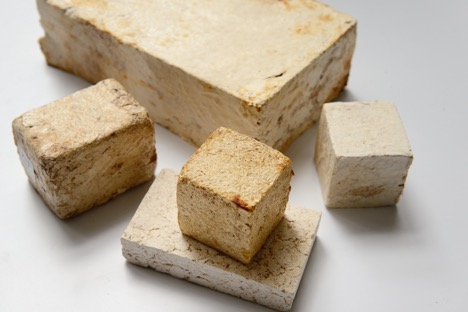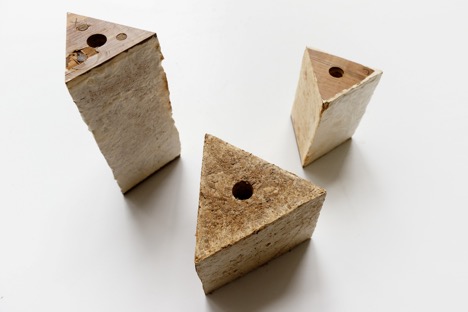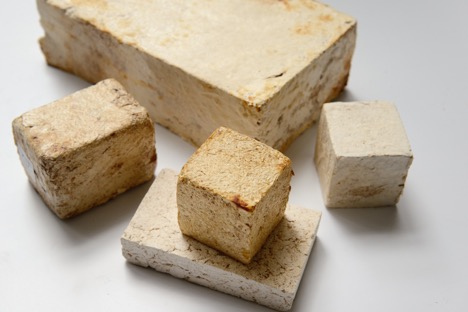Mycelium-based composite materials

Globally, the current pace of development in developing countries has led to an increased demand for traditional building and construction materials such as concrete. However, many developing countries have financial burden and/or limited access to produce their own cement. Moreover, cement is a non-renewable mineral and is one of the primary producers of carbon dioxide - a major greenhouse gas - and undoubtedly, one of the main causes of the global warming worldwide. This calls for more affordable, renewable and sustainable building materials such as mycelium - the structural part of fungi which forms its vegetative growth and mass.
Mycelium plays an important role in our ecosystem by recycling minerals and carbon in the nitrogen fixing cycle. In addition to being a non-toxic biological material that grows quickly, it also self-adheres to feedstock while utilising almost zero energy. These unique properties make mycelium-based composite materials sustainable and attractive options for the replacement of building materials with the addition of reinforcements.
The Alternative Construction Materials research project aims to further characterise and improve the mechanical characteristics of mycelium-based composite materials grown on traditional sawdust substrate as well as on different agricultural waste. As it stands now, since mycelium-based materials have only been introduced recently in engineering applications, information on its mechanical properties is currently very limited.
Based on ASTM standards, preliminary analysis of experimental process from material growth to property testing showed that mycelium grows easily under common household conditions and that it possesses unique mechanical properties as compared to materials such as plywood and traditional bricks. Further, experiment results also provided deep insight into building with materials that can be effectively cultivated on construction site to address the environmental impact of human activities that is desperately needed.
As one of the first examples, the Alternative Construction Materials team under Professorship of Dirk E. Hebel and the Block Research Group at ETH Zurich will jointly present the first full-scale structure at the Seoul Biennale in September 2017. Utilising regenerative materials and a design based on form and force diagrams to show the geometry of the structure’s forces, this first full-scale structure built with mycelium and bamboo as growing building elements will be designed using 3D graphic statics.

